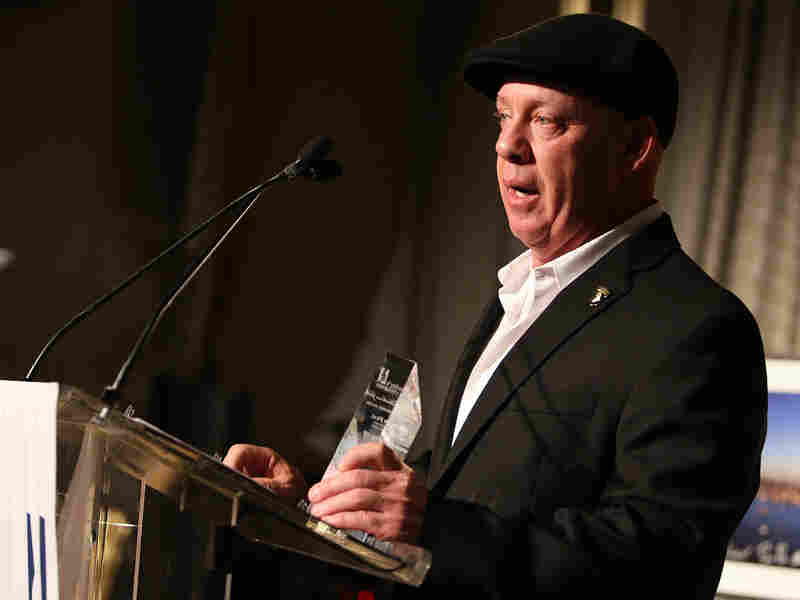A Tale Of Two States: How California And Texas May Fare Under GOP Health Plan
In the GOP’s attempt to repeal the Affordable Care Act, California would lose a lot of federal funding. Texas would gain a lot in the short term, but experts worry Texas would not use the money well.
AILSA CHANG, HOST:
The Senate is taking one more stab at repealing the Affordable Care Act. Republicans say they’ll vote on what’s known as the Graham-Cassidy bill next week. Among other things, it would dramatically redistribute federal funds to states. And generally, states that expanded Medicaid stand to lose billions of dollars. The rest would see a short-term influx of funds. We’re going to hear from one of those states, Texas, in a minute. First, from KQED in San Francisco, April Dembosky explains why California would be one of the hardest hit states.
APRIL DEMBOSKY, BYLINE: The new Graham-Cassidy legislation would take money from states that have invested heavily in the Affordable Care Act, then redistribute it to other states that haven’t. Aviva Aron-Dine is with the Center on Budget and Policy Priorities.
AVIVA ARON-DINE: For a state like California or a Massachusetts or a New York, exactly the states that might be most motivated to at least try to preserve the ACA coverage gains – those are the states that would face the deepest cuts to their federal resources.
DEMBOSKY: The bill’s authors say their plan gives states more flexibility to build their own health systems. But California would lose 35 percent of its funding by 2026. That means millions of people with Medicaid and exchange plans would lose their insurance. A lot of those people are entrepreneurs and their employees. The head of the Small Business Majority in California, Mark Herbert, says the health funding cuts are bad for the economy, too.
MARK HERBERT: It would be massively destabilizing to the ability of small employers to attract talent. It would be very difficult for entrepreneurs and self-employed folks to access some level of coverage.
DEMBOSKY: Under the Affordable Care Act in California, a million and a half small business owners and employees got health coverage, and the state’s overall uninsured rate dropped by more than half. For NPR News, I’m April Dembosky in San Francisco.
ASHLEY LOPEZ, BYLINE: I’m Ashley Lopez in Austin. At first glance, it looks like Texas comes out as one of the big winners. Texas will get a windfall of $35 billion to help replace Obamacare exchanges and other programs, more than any other state. State officials get to decide how they want to spend that money. But Stacey Pogue with the Center for Public Policy Priorities in Austin says that doesn’t necessarily mean this is an improvement.
STACEY POGUE: Regardless of the size of the block grant, there’s just no assurance that it would translate into good coverage or coverage that’s affordable as what we have today.
LOPEZ: Texas already has the highest number of uninsured folks, and Pogue says the state just doesn’t have the infrastructure in place to expand coverage to more people. It didn’t expand Medicaid, and the state didn’t set up its own exchange. They used healthcare.gov.
POGUE: There’s no planning and no thought put into, how would we create affordable coverage for low-income Texans unlike the 31 states that have expanded Medicaid, have done some central planning? And Texas would be starting from scratch.
LOPEZ: She says it will also take a lot of political will to make sure the state is expanding health care. Pogue says that has been lacking among state lawmakers for years. And in order to get the block grant, states need to create something workable by 2020. For comparison, it took Massachusetts four years to set up its pre-Obamacare insurance market.
STACY WILSON: We are very concerned.
LOPEZ: That’s Stacy Wilson. She’s the president of the Children’s Hospital Association of Texas. She says this pot of money from Cassidy-Graham also doesn’t solve problems for Medicaid, 70 percent of which covers children. Wilson says that’s because the federal government would pay a fixed amount per person per capita cap, which locks in how much the state gets per Medicaid enrollee.
WILSON: We have very low per-capita costs already, and we get locked into that forever.
LOPEZ: A conservative policy group in Texas is also not happy about the bill. However, their concern is that it actually doesn’t go far enough to repeal Obamacare. For NPR News, I’m Ashley Lopez in Austin.
CHANG: This story is part of a partnership with NPR, local member stations and Kaiser Health News.
Copyright © 2017 NPR. All rights reserved. Visit our website terms of use and permissions pages at www.npr.org for further information.
NPR transcripts are created on a rush deadline by Verb8tm, Inc., an NPR contractor, and produced using a proprietary transcription process developed with NPR. This text may not be in its final form and may be updated or revised in the future. Accuracy and availability may vary. The authoritative record of NPR’s programming is the audio record.






